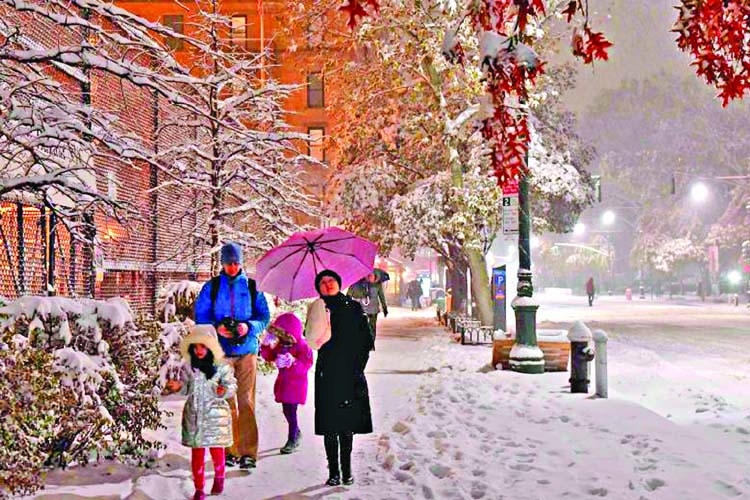Snowstorm causes chaos in New York

Thousands of commuters were stranded outside the Port Authority Bus Terminal in Manhattan, the busiest bus station in United States, after more than 1,100 scheduled buses were cancelled. The line of people stretched a city block. The upper level of the George Washington Bridge one of the busiest bridges in the world turned into a carpark after a 20-vehicle crash, with drivers abandoning their cars.
Buses were forced off the roads in New Jersey, so children had to spend the night at school, sleeping on gym mats until their parents were able to rescue them in the morning. The New York region was all but paralyzed on Thursday by a wintry storm that led to recriminations and second-guessing on Friday about what exactly went wrong.
Even grizzled commuters said they had never endured such a meltdown, venting their fury at those in charge of running buses and trains and clearing highways. The storm was unexpected but not especially powerful. As a result, the havoc that unfolded in New York City and beyond appeared to highlight the fragility of the region's transportation system, showing how ageing infrastructure has become increasingly unreliable, from the subway to buses to commuters railroads and train and bus stations.
"The system doesn't have any slack in a crisis," said Mitchell Moss, director of the Rudin Center for Transportation Policy and Management at New York University. "We're not really equipped to handle a breakdown in one part when it has to be absorbed by other parts of the transportation system."
Virtually every mode of transportation is at full capacity and dependent on brittle infrastructure, some of it built more than a century ago. The commuter train and bus networks, held together by crumbling bridges and tunnels, are often just one derailment or pileup away from a breakdown. The storm had a ripple effect across seemingly every means that people rely on to travel. Snow piled up on roads that went unploughed in the city and suburbs. That snarled city buses, which serve more than two million New Yorkers each day.
The road conditions prevented New Jersey Transit buses from reaching the Port Authority Bus Terminal. Commuters abandoned the terminal, turning to trains that were overloaded and delayed. Only the subways operated relatively normally.
